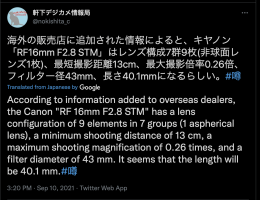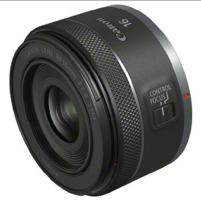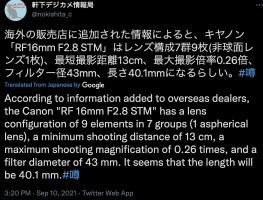I think Canon and Nikon had 21mm wide-angles that required the mirror to be locked up for using them, mainly for architecture use, in order to take advantage of the simple solutions possible when you don't have a mirror in the way.
Canon's was/is a 19mm, the FL 19mm f/3.5, and it is a huge pain to use, utterly terrible optically, and architecture is the last thing you'd want to use it for thanks to its extremely heavy and non-linear distortion. It came with a hotshoe viewfinder attachment to shoot with the mirror up.
They later made a retrofocus version which could be used with the mirror down, but it's a much larger and heavier lens, and the optics are no better.
A particular problem with the original 19mm's design with digital (and some colour film) is having the rear elements so close to the sensor/film means the angle the light has to exit at is really severe and nothing really lines up well. Not only does this mean the mid-frame to the edges are very soft and very dark, but on most digital sensors it causes very strong purple vignette. (On some colour films it can be green.)
Obviously a lot of time has passed since 1964 and manufacturing techniques have improved immensely, but the laws of physics do not change and designs like that lens (and potentially this one) still face most of the same troubles. Being bale to put big elements closer to the sensor helps in getting the wide angle of view, but geting that wide angle
with good quality is another matter.
They should make some extension tubes, or another vendor should. a tiny extension has a huge effect for wide-angles.
Many third-parties already do make RF tubes. For essome bizarre reason Kenko's tubes are priced at something stupid like £200 for a couple of tubes, while you're looking at £40 or so for brands like Meike and JJC. Canon probably are holding off making official ones until they feel sales of their macro and semi-macro RF lenses have already dropped off; it's hard to keep selling macro lenses when many people feel they can get the same results with a standard lens and a tube. Once Canon do, inevitably, put out their own tubes, you'll see more companies copying them and prices on RF tubes will come down.
and IBIS is there for owners of everything other than R and RP.
Sure, but the RP is the highest-selling RF body to date and the R is second. For all the headlines they get, the R6 and R5 are still new, high-priced, low-availability products. And of course we have no idea if Canon will put IBIS in every other body going forward; it would be a
very Canon thing to reserve IBIS only for bodies above the £2000 mark.
Is the corner sharpness good enough for landscapes?
Is the weather-sealing adequate for use in showery conditions?
Does it suffer from unacceptable levels of flare?
Does it suffer from unacceptable levels of CA?
Does it suffer from unacceptable levels of barrel or pincushion distortion?
1) Will probably depend on how much of the image someone defines as the "corner". Given how the other non-L RF lenses have been, and the size of this lens, it's a safe bet there's going to be a lot of distortion and vignetting to correct.
2) It's categorically not weather sealed, as is the case for all of Canon's non-L lenses, since Canon think it's still 1986 and sealing and lens hoods are a "luxury" addition. If someone wants weather sealed, cheap, compact lenses, they need to move to Fuji's f/2 and f/2.8 primes, or Tamron's on Sony.
3) It's an ultra wide with apparently backwards optics, so flaring should be very common but not particularly strong.
4) Yes but I'm willing to bet the camera will burn opcodes into the files to correct it so we never see the fringing outside of RawTherapee.
5) See #1.
IBIS is not so great on the wide end.
IBIS isn't
quite as effective as you go wider than it is in the middle range, but this lens being so small will help a lot (IBIS being more effective the nearer to the sensor the largest optics are), and really it's telephotos where IBIS is basically useless. (Keeping the sensor still doesn't matter when a giant front element is swinging around two feet away!)
I wonder how it compares to the Samyang 14mm RF AF 2.8?
Given the size difference, I think it's safe to assume this lens will be relying more on software and the Samyang will remain the better 'pure' optic. However, as the 24-240 shows Canon have gotten opcodes down to a fine art (or they've copy&pasted from Fuji, who are the real masters of software correction) and the actual end result from the Canon may be superior, regardless of how it gets there.
But the Samyang will surely have better autofocus (not that AF really varies much with UWAs, but even so, these STM motors have been consistently
terrible), is weather sealed, and you didn't have to pay extra to get a hood. So it's not like the Samyang (or Rokinon/Bower, whatever branding of it someone buys) will suddenly become pointless or outright replaced.
Cards on the table, my gut instinct is the Canon will be better for jpg and video while the Samyang/Rokinon/Bower will be better for raw stills, and both will have their place in a lot of peoples' bags.



